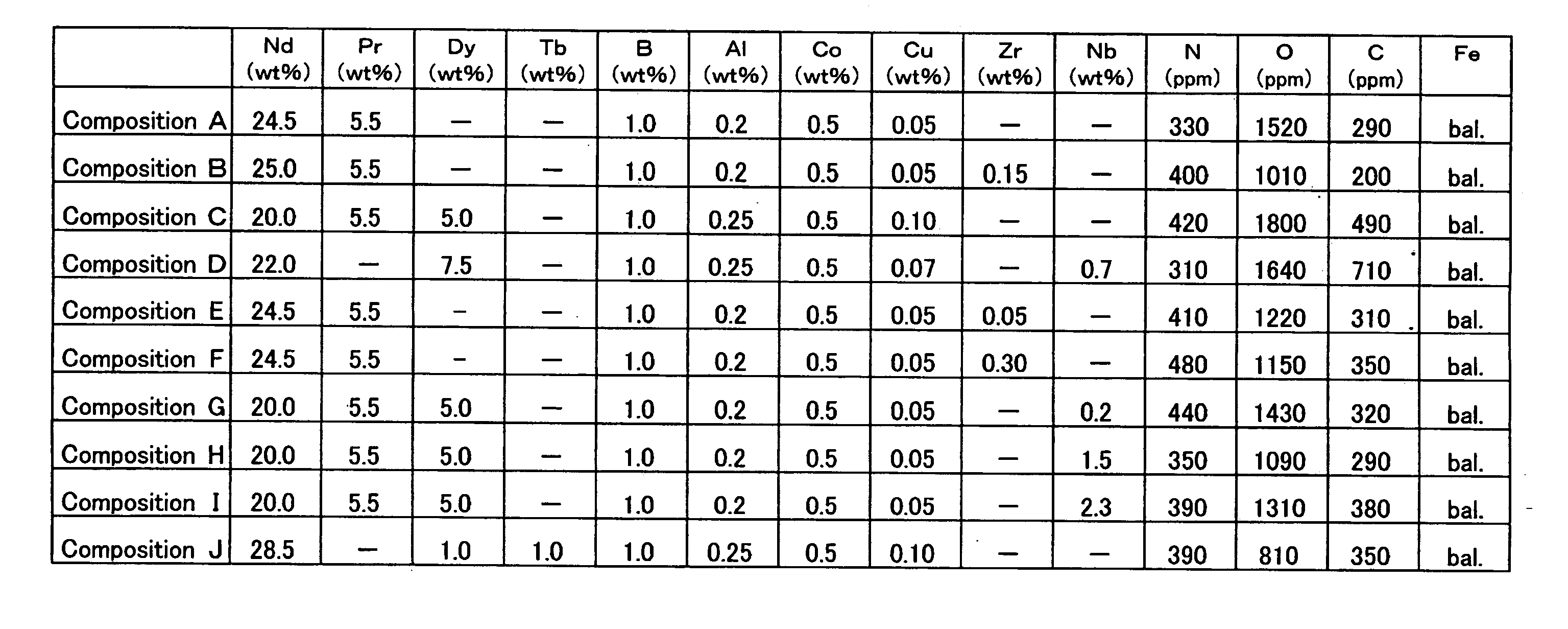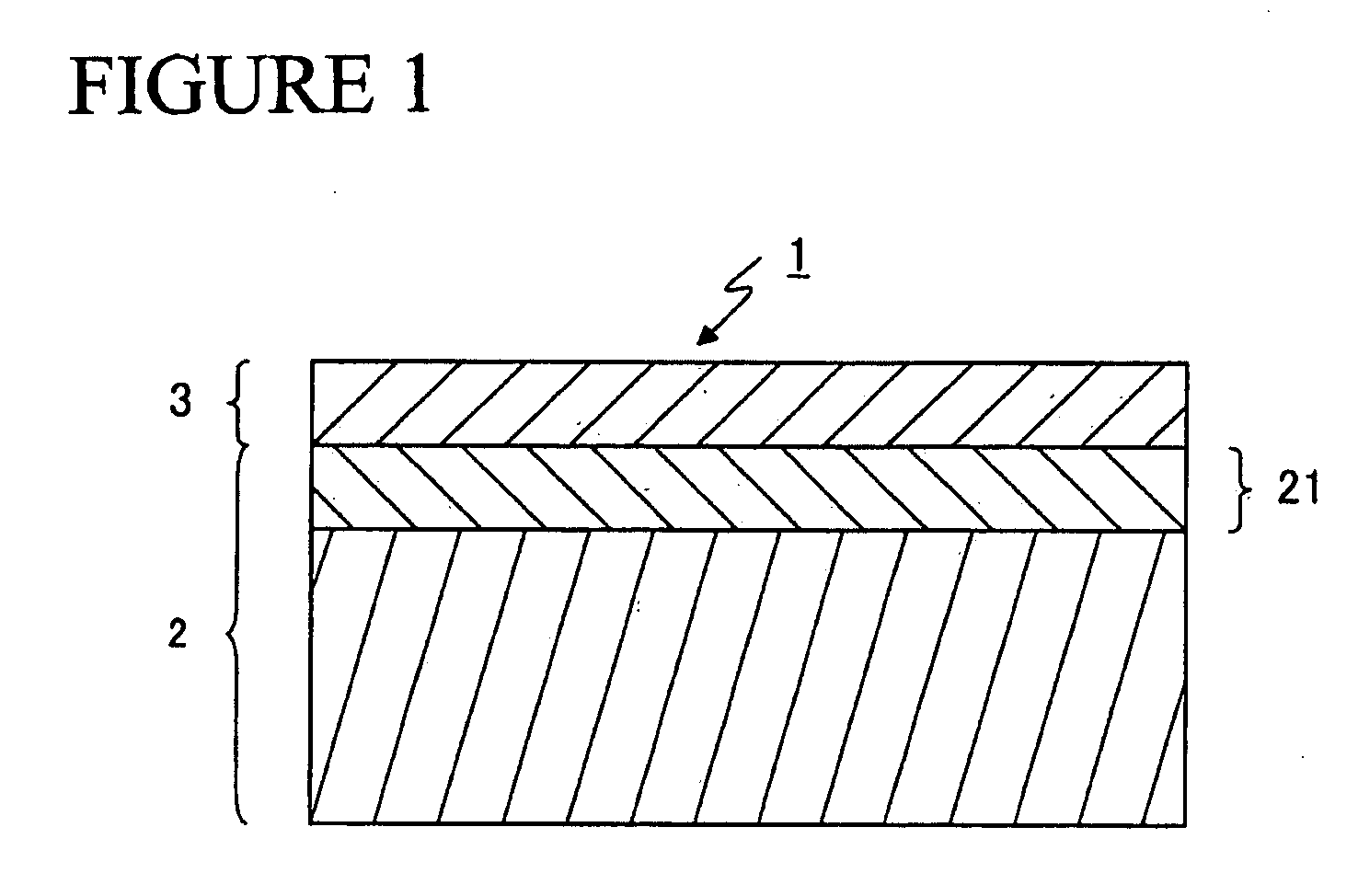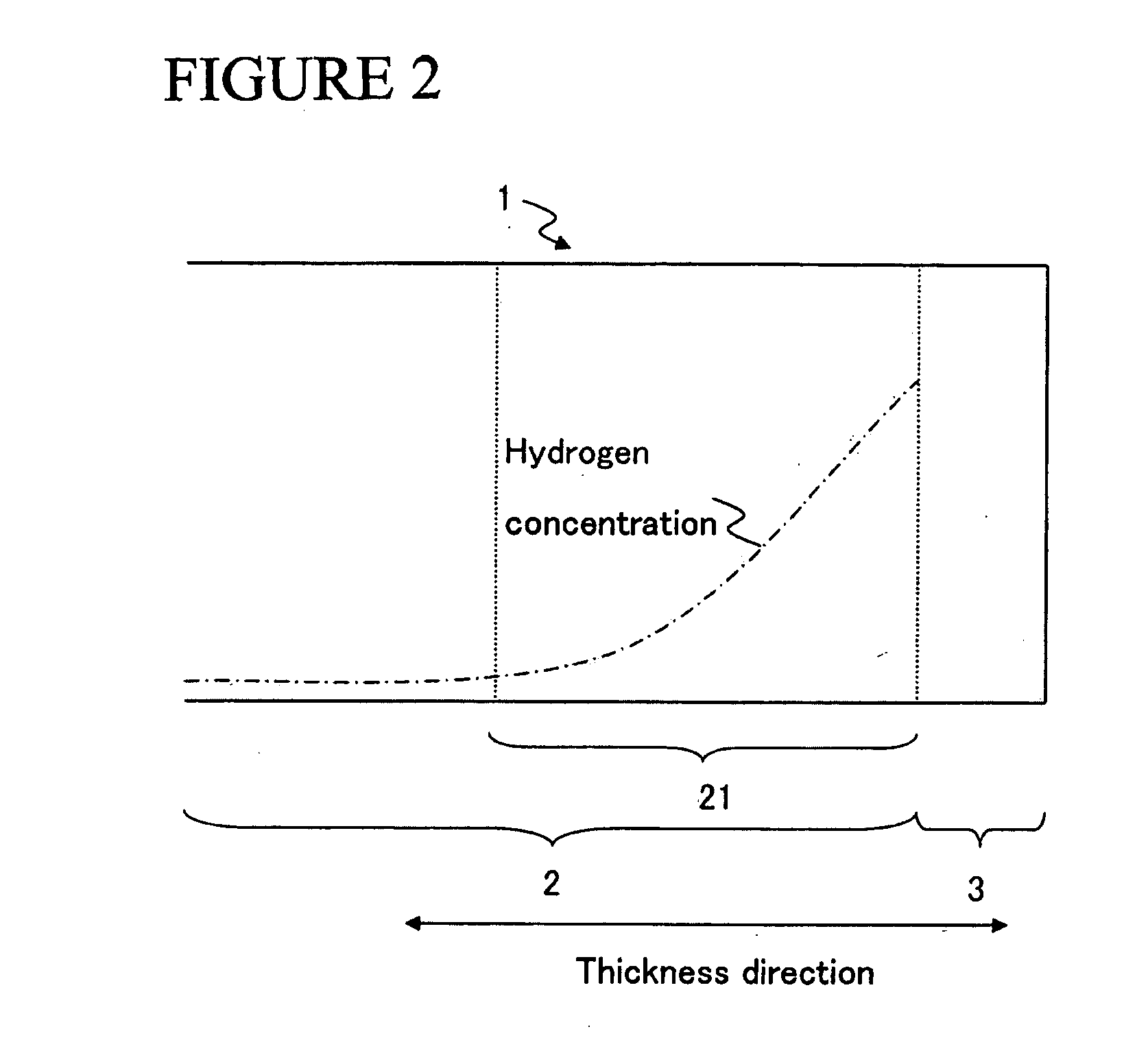R-t-b system permanent magnet
a permanent magnet and rtb technology, applied in the field of improving the corrosion resistance of an can solve the problems of poor degraded magnetic properties, and so as to improve the corrosion resistance of rtb system permanent magnets with an overcoat formed thereon
- Summary
- Abstract
- Description
- Claims
- Application Information
AI Technical Summary
Benefits of technology
Problems solved by technology
Method used
Image
Examples
example 1-1-1
[0084] A thin strip alloy having a predetermined composition was prepared by means of the strip casting method. The thin strip alloy was made to absorb hydrogen at room temperature, and thereafter, the absorbed hydrogen was released by raising the temperature up to approximately 400 to 700° C. in an atmosphere of Ar to yield a coarse powder.
[0085] The coarse powder was pulverized by use of a jet mill. The pulverizing was carried out in such a way that the inside of the jet mill was purged with N2 gas and thereafter a high pressure N2 gas flow was used. The content of O2 in the high pressure N2 gas was at a level to be regarded as substantially null. The mean particle size of the obtained fine powder was 4.0 μm. It is to be noted that zinc stearate was added before pulverizing as a milling aid in a content of 0.01 to 0.10 wt % and the content of the residual carbon in the sintered body was controlled.
[0086] The obtained fine powder was compacted in a magnetic field of 1200 kA / m (15...
example 1-1-2
[0093] In the same manner as in Example 1-1-1 (except that oleic acid amide was added as a milling aid in a content of 0.05 to 0.20 wt % before pulverizing), the sintered magnets having the compositions shown in FIG. 6 were prepared, and the corrosion resistance was evaluated and the magnetic properties were measured for each of the sintered magnets. Also, in the same manner as in Example 1-1-1, the sum of the areas of the R2Fe14B grains of 10 μm or less in grain size and the sum of the areas of the R2Fe14B grains of 20 μm or more in grain size in relation to the total area of the main phase were measured for each of the sintered magnets. The results thus obtained are shown in FIG. 7.
[0094] As shown in FIG. 7, sample No. 19 having a content of N as low as 100 ppm was worse in corrosion resistance than sample No. 18; and sample No. 20 having a content of N as large as 1800 ppm was low in coercive force. Thus, the content of N needs to be controlled to fall within a predetermined ran...
example 1-2
[0098] A thin strip alloy having a predetermined composition was prepared by means of the strip casting method. The thin strip alloy was made to absorb hydrogen at room temperature, and thereafter, the absorbed hydrogen was released by raising the temperature up to approximately 400 to 700° C. in an atmosphere of Ar to yield a coarse powder.
[0099] The coarse powder was pulverized by use of a jet mill. The pulverizing was carried out in such a way that the inside of the jet mill was purged with N2 gas and thereafter a high pressure N2 gas flow was used. The mean particle size of the obtained fine powder was 4.0 μm. It is to be noted that zinc stearate was added before pulverizing as a milling aid in a content of 0.05 wt %.
[0100] The obtained fine powder was compacted in a magnetic field of 1200 kA / m (15 kOe) under a pressure of 98 MPa (1.0 ton / cm2) to yield a compacted body. The compacted body was sintered under vacuum at 1030° C. for 4 hours, and thereafter quenched. The obtained ...
PUM
| Property | Measurement | Unit |
|---|---|---|
| thickness | aaaaa | aaaaa |
| grain size | aaaaa | aaaaa |
| grain size | aaaaa | aaaaa |
Abstract
Description
Claims
Application Information
 Login to View More
Login to View More - R&D
- Intellectual Property
- Life Sciences
- Materials
- Tech Scout
- Unparalleled Data Quality
- Higher Quality Content
- 60% Fewer Hallucinations
Browse by: Latest US Patents, China's latest patents, Technical Efficacy Thesaurus, Application Domain, Technology Topic, Popular Technical Reports.
© 2025 PatSnap. All rights reserved.Legal|Privacy policy|Modern Slavery Act Transparency Statement|Sitemap|About US| Contact US: help@patsnap.com



